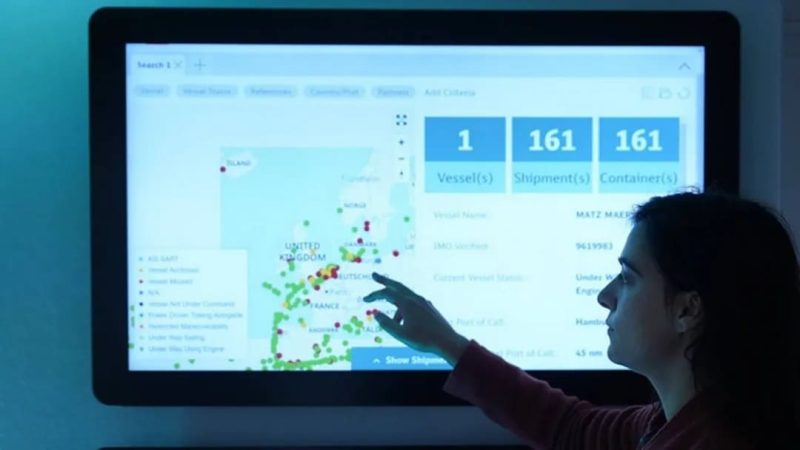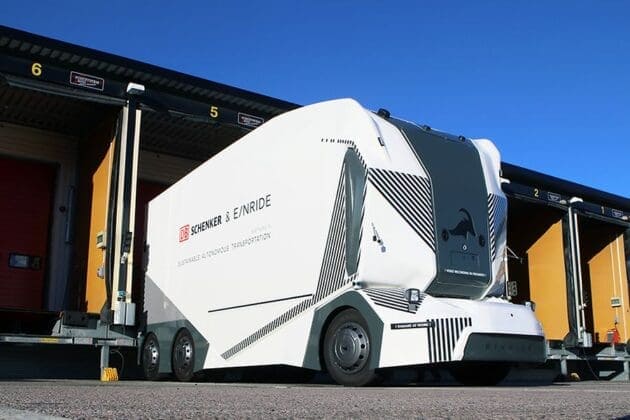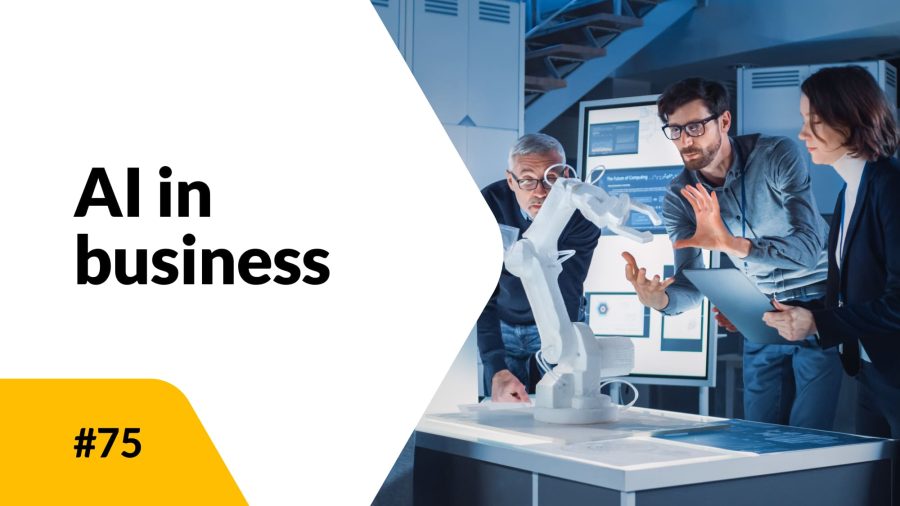AI in transportation and logistics - table of contents
- Fleet management with AI in transportation
- Implementing AI to optimize routes and reduce transportation costs
- Inventory management with AI in transportation
- Introducing AI to automate warehouse processes and autonomous transportation
- Real-time data monitoring and analysis with AI in transportation
- Safety and accident prevention
- The future of AI in transportation and logistics
- Summary
Fleet management with AI in transportation
AI-based systems can analyze very large amounts of data about vehicles, drivers, and routes. This makes it possible to adjust schedules and routes, make better use of transportation resources, and reduce fuel consumption by up to 10-15%.
Intelligent systems equipped with machine learning capabilities can predict potential breakdowns months in advance based on data from sensors installed in vehicles and other equipment. This makes it possible to schedule repairs and maintenance at convenient times, minimize downtime, and avoid unplanned stops on the road.
One example of the use of AI in fleet management is DB Schenker, a global leader in the logistics industry. The company uses advanced AI algorithms to optimize transportation planning, demand forecasting, and offer management. In Bulgaria, for example, the company used the Transmetrics AI solution to improve vehicle utilization and reduce transit times for bulk shipments.
In air transportation, the company is using a hybrid simulation and forecasting tool that allows for customization of simulations and is based on historical data. By using AI, DB Schenker is not only accelerating its digital transformation but also securing a long-term competitive advantage in the logistics market.

Source: DB Schenker (https://shippingwatch.com/logistics/article14448745.ece)
Implementing AI to optimize routes and reduce transportation costs
Modern AI-powered mapping systems can analyze traffic congestion in real time, search for detours, and suggest optimal routes for drivers based on current conditions. What’s more, machine-learning algorithms can help better plan the distribution of loads so that they are transported over the shortest possible distances. This translates directly into lower operating costs.
One example of a company specializing in AI solutions for route optimization is the American firm FourKites. They’ve developed a real-time supply chain monitoring platform that leverages data and machine learning to enhance transportation visibility and efficiency.
One of their clients, Henkel, benefits from using the FourKites solution by having access to real-time data on the location and estimated time of arrival (ETA) of shipments. This allows them to better plan their tasks and respond to any potential delays.
FourKites has also brought additional benefits to Henkel, such as time and cost savings, improvement in the quality and accountability of LSP (Logistics Service Providers), fair dispute resolution, and avoiding penalties for delays. In 2024, Henkel plans to track almost a million shipments using FourKites.

Source: Four Kites (https://www.fourkites.com/platform/)
Inventory management with AI in transportation
Artificial intelligence is adept at analyzing massive amounts of data to accurately predict demand for specific goods and raw materials. As a result, inventory can be managed more efficiently, warehouses can be replenished more accurately, and out-of-stocks can be reduced.
Two popular tools that use AI and machine learning for supply chain optimization are:
- RELEX (https://www.relexsolutions.com/) – a comprehensive platform used for demand forecasting and automatic inventory replenishment. The company helps customers across all industries plan demand, manage inventory, optimize logistics processes, and drive revenue growth.
- SAP IBP (https://www.sap.com/products/scm/integrated-business-planning.html) – An advanced inventory planning and supply chain module that is part of the SAP suite. SAP IBP helps optimize logistical processes and provides various functionalities,including Sales and Operations Planning (S&OP), demand forecasting, response and delivery, inventory planning, and transportation planning.

Introducing AI to automate warehouse processes and autonomous transportation
Autonomous robots equipped with artificial intelligence modules are already at work in many modern warehouses and logistics centers. They are capable of picking orders, packing products, and transporting pallets of goods. Machine learning algorithms enable these robots to recognize individual goods and packages, plan their own paths around the warehouse, and even communicate with employees.
What happens when a product, packed and prepared by a robot, is ready to hit the road? This opens the door to the implementation of AI in autonomous vehicles. One example is the T-Pod autonomous truck, which is currently being tested in DB Schenker distribution centers. It can be controlled by an operator while driving on the road or, thanks to the implementation of AI, it can autonomously transport pallets of products, avoiding obstacles along the way. Navigation is facilitated through the use of cameras, radar and depth sensors.
The DB Schenker T-Pod is the first vehicle of its kind to be approved for public roads in Sweden. It can carry up to 20 tons of cargo and has a range of around 200 km on a single charge.

Source: DB Schenker (https://www.dbschenker.com/)
Real-time data monitoring and analysis with AI in transportation
Data from in-vehicle sensors, warehouse automation systems, and shipment locators can be analyzed in real time by artificial intelligence algorithms. This allows for making accurate business decisions instantly and improves the efficiency of the entire organization. For example, a system equipped with an AI module can help respond immediately to delivery delays and notify customers or take preventative measures.
The OLX team used machine learning to build a predictive ETA model, which in transportation and logistics stands for Estimated Time of Arrival. The model takes into account such factors as:
- location,
- type of goods,
- weather conditions,
- holidays, etc.
The model was trained on data from over two million transactions and tested with data from six countries. The ETA model achieved very high accuracy and precision, and it demonstrated the ability to adapt to changes in market and operational conditions. The ETA model has helped increase customer trust and satisfaction, as well as enhance the efficiency and profitability of the delivery process.
Safety and accident prevention
Intelligent monitoring systems equipped with AI modules not only protect the assets of transportation companies. By analyzing images from cameras and data from sensors, they can assess driver behavior and detect signs of fatigue, suggesting breaks during the journey. Moreover, machine learning algorithms, continuously analyzing incoming telemetry data from vehicles, can predict potential faults well in advance.
And so, the Israeli start-up Cortica applied neural networks to analyze engine sounds for early detection of impending malfunctions. Companies like Continental and ZF Friedrichshafen AG offer similar solutions for predictive vehicle diagnostics for carriers.
The future of AI in transportation and logistics
Experts agree that due to artificial intelligence, the TSL industry will undergo a complete transformation within the next ten years. Autonomous trucks will become the standard on roads in the United States and will start appearing more frequently in other parts of the world. Meanwhile, in warehouses, the majority of operations—from order picking to loading—will be handled by robots.
Thanks to AI, transportation and logistics costs will decrease by as much as 30-40%. Delivery times will also be shortened through route and loading optimization, as well as the implementation of intelligent city systems that facilitate vehicle movement during the final kilometers of the route. The integration of AI in logistics will enhance customer service quality, and the risk of human errors will be nearly eliminated.

Source: DALL·E 3, prompt: Marta M. Kania (https://www.linkedin.com/in/martamatyldakania/)
AI in transportation – summary
In conclusion, systems using machine learning and AI algorithms in transportation have great potential in the TSL industry that is just beginning to be tapped. Their implementation is an opportunity to significantly reduce costs, shorten delivery times, improve transportation safety, and better serve customers. To be successful, however, the implementation of these technologies must be approached strategically.

If you like our content, join our busy bees community on Facebook, Twitter, LinkedIn, Instagram, YouTube, Pinterest, TikTok.
Author: Robert Whitney
JavaScript expert and instructor who coaches IT departments. His main goal is to up-level team productivity by teaching others how to effectively cooperate while coding.
AI in business:
- Threats and opportunities of AI in business (part 1)
- Threats and opportunities of AI in business (part 2)
- AI applications in business - overview
- AI-assisted text chatbots
- Business NLP today and tomorrow
- The role of AI in business decision-making
- Scheduling social media posts. How can AI help?
- Automated social media posts
- New services and products operating with AI
- What are the weaknesses of my business idea? A brainstorming session with ChatGPT
- Using ChatGPT in business
- Synthetic actors. Top 3 AI video generators
- 3 useful AI graphic design tools. Generative AI in business
- 3 awesome AI writers you must try out today
- Exploring the power of AI in music creation
- Navigating new business opportunities with ChatGPT-4
- AI tools for the manager
- 6 awesome ChatGTP plugins that will make your life easier
- 3 grafików AI. Generatywna sztuczna inteligencja dla biznesu
- What is the future of AI according to McKinsey Global Institute?
- Artificial intelligence in business - Introduction
- What is NLP, or natural language processing in business
- Automatic document processing
- Google Translate vs DeepL. 5 applications of machine translation for business
- The operation and business applications of voicebots
- Virtual assistant technology, or how to talk to AI?
- What is Business Intelligence?
- Will artificial intelligence replace business analysts?
- How can artificial intelligence help with BPM?
- AI and social media – what do they say about us?
- Artificial intelligence in content management
- Creative AI of today and tomorrow
- Multimodal AI and its applications in business
- New interactions. How is AI changing the way we operate devices?
- RPA and APIs in a digital company
- The future job market and upcoming professions
- AI in EdTech. 3 examples of companies that used the potential of artificial intelligence
- Artificial intelligence and the environment. 3 AI solutions to help you build a sustainable business
- AI content detectors. Are they worth it?
- ChatGPT vs Bard vs Bing. Which AI chatbot is leading the race?
- Is chatbot AI a competitor to Google search?
- Effective ChatGPT Prompts for HR and Recruitment
- Prompt engineering. What does a prompt engineer do?
- AI Mockup generator. Top 4 tools
- AI and what else? Top technology trends for business in 2024
- AI and business ethics. Why you should invest in ethical solutions
- Meta AI. What should you know about Facebook and Instagram's AI-supported features?
- AI regulation. What do you need to know as an entrepreneur?
- 5 new uses of AI in business
- AI products and projects - how are they different from others?
- AI-assisted process automation. Where to start?
- How do you match an AI solution to a business problem?
- AI as an expert on your team
- AI team vs. division of roles
- How to choose a career field in AI?
- Is it always worth it to add artificial intelligence to the product development process?
- AI in HR: How recruitment automation affects HR and team development
- 6 most interesting AI tools in 2023
- 6 biggest business mishaps caused by AI
- What is the company's AI maturity analysis?
- AI for B2B personalization
- ChatGPT use cases. 18 examples of how to improve your business with ChatGPT in 2024
- Microlearning. A quick way to get new skills
- The most interesting AI implementations in companies in 2024
- What do artificial intelligence specialists do?
- What challenges does the AI project bring?
- Top 8 AI tools for business in 2024
- AI in CRM. What does AI change in CRM tools?
- The UE AI Act. How does Europe regulate the use of artificial intelligence
- Sora. How will realistic videos from OpenAI change business?
- Top 7 AI website builders
- No-code tools and AI innovations
- How much does using AI increase the productivity of your team?
- How to use ChatGTP for market research?
- How to broaden the reach of your AI marketing campaign?
- "We are all developers". How can citizen developers help your company?
- AI in transportation and logistics
- What business pain points can AI fix?
- Artificial intelligence in the media
- AI in banking and finance. Stripe, Monzo, and Grab
- AI in the travel industry
- How AI is fostering the birth of new technologies
- The revolution of AI in social media
- AI in e-commerce. Overview of global leaders
- Top 4 AI image creation tools
- Top 5 AI tools for data analysis
- AI strategy in your company - how to build it?
- Best AI courses – 6 awesome recommendations
- Optimizing social media listening with AI tools
- IoT + AI, or how to reduce energy costs in a company
- AI in logistics. 5 best tools
- GPT Store – an overview of the most interesting GPTs for business
- LLM, GPT, RAG... What do AI acronyms mean?
- AI robots – the future or present of business?
- What is the cost of implementing AI in a company?
- How can AI help in a freelancer’s career?
- Automating work and increasing productivity. A guide to AI for freelancers
- AI for startups – best tools
- Building a website with AI
- OpenAI, Midjourney, Anthropic, Hugging Face. Who is who in the world of AI?
- Eleven Labs and what else? The most promising AI startups
- Synthetic data and its importance for the development of your business
- Top AI search engines. Where to look for AI tools?
- Video AI. The latest AI video generators
- AI for managers. How AI can make your job easier
- What’s new in Google Gemini? Everything you need to know
- AI in Poland. Companies, meetings, and conferences
- AI calendar. How to optimize your time in a company?
- AI and the future of work. How to prepare your business for change?
- AI voice cloning for business. How to create personalized voice messages with AI?
- Fact-checking and AI hallucinations
- AI in recruitment – developing recruitment materials step-by-step
- Midjourney v6. Innovations in AI image generation
- AI in SMEs. How can SMEs compete with giants using AI?
- How is AI changing influencer marketing?
- Is AI really a threat to developers? Devin and Microsoft AutoDev
- AI chatbots for e-commerce. Case studies
- Best AI chatbots for ecommerce. Platforms
- How to stay on top of what's going on in the AI world?
- Taming AI. How to take the first steps to apply AI in your business?
- Perplexity, Bing Copilot, or You.com? Comparing AI search engines
- ReALM. A groundbreaking language model from Apple?
- AI experts in Poland
- Google Genie — a generative AI model that creates fully interactive worlds from images
- Automation or augmentation? Two approaches to AI in a company
- LLMOps, or how to effectively manage language models in an organization
- AI video generation. New horizons in video content production for businesses
- Best AI transcription tools. How to transform long recordings into concise summaries?
- Sentiment analysis with AI. How does it help drive change in business?
- The role of AI in content moderation


















